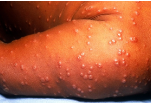





THE ROAD TO REVOLUTION
1757 - July 3, 1776
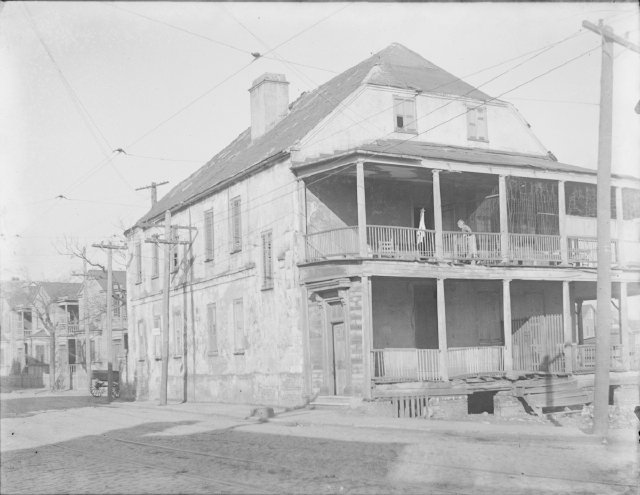


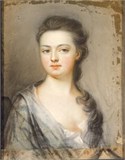


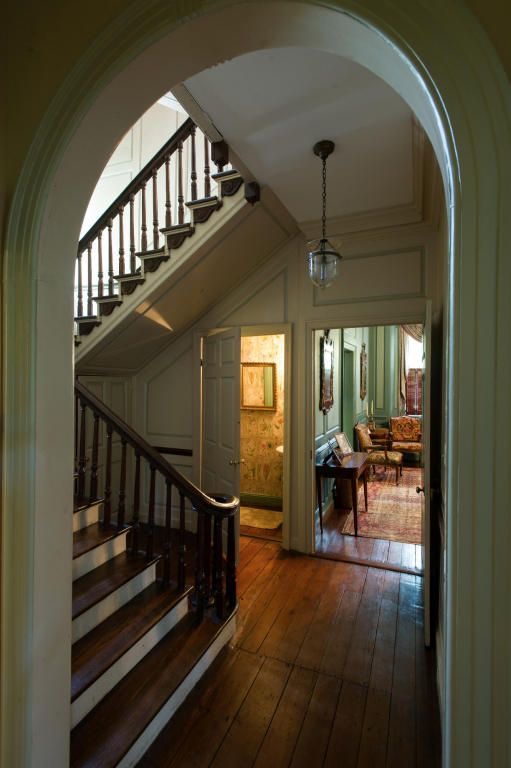


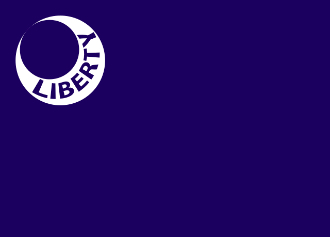
1758
Feb. 28 -- Lt. Col. Henry Bouquet, a "brash thirty-eight-year-old British soldier-of-fortune" demanded that the colonial Assembly pay for his officers' housing needs. Soldiers' housing would become one of colonists' biggest complaints as the colonies moved toward revolution. (Source: Charleston! Charleston!, p. 90-91)
March 18 -- The colonial Assembly denied Lt. Col. Henry Bouquet's demand that they pay for his soldiers' housing. Among those who were opposed were Peter Manigault, Christopher Gadsden, Charles Pinckney, Henry Laurens and Rawlins Lowndes, writing "Officers and Soldiers cannot, legally or constitutionally, be quarter'd in private Houses, without the special Consent of the Owners or Possessors of such Houses."(Source: Charleston! Charleston!, p. 91)
July 12 -- Chief Justice Charles Pinckney died, leaving his wife Eliza a widow at age 35.
1759
July 4 -- A committee of the Charles Town Library Society began considering if the money they had raised so far, including pledges, was enough to "encourage one or more Professors of the different branches of learning to settle among them" for the purpose of beginning today's College of Charleston. (Source: A History of the College of Charleston, p. 6)
1760
Jan. 9 -- Gov. Lyttleton and his soldiers marched down Broad Street at noon as cannons fired to welcome the troops back to Charleston after having concluded a peace treaty with the Cherokees near Keowee. The treaty was hastily made as a raging smallpox epidemic was ravaging the tribe, and the soldiers feared catching it.
Jan. 12 -- Three days after Gov. Lyttleton's return from his war against uptate Cherokees, the worst epidemic to date of smallpox broke out within the colony.
1761
Feb. 1 -- St. Michael's Church held its first service.
Dec. 17 -- Early Patriot leader Christopher Gadsden wrote an editorial in the Gazette accussing Lt. Col. James Grant, a Scottish officer in the British Army, of not having been aggressive enough in his attacks on the Cherokees, claiming he did not permit his men "to cut the throats of as many as they could have." In Charleston! Charleston!, author Walter J. Fraser Jr. suggests the criticism may have been fueled, at least in part, by "personal jealousies increasingly common in relations between British regular officers and provincial officers" (p. 95).
1764
July 7 -- Joseph Brown Ladd was born on a small farm near Newport, R.I.
Aug. 19 -- Arthur Middleton married Mary Izard, "a Lady who is one of the first of her sex for sense, politeness and every female accomplishment."
1765
Sept. 4 -- Christopher Gadsden, Thomas Lynch and John Rutledge set sail for the illegally called Stamp Act Congress in New York City. Gadsden, ever the ardent Patriot, served as chair of the committee that drafted resolutions condemning the act.
Sept. 17 -- The South Carolina Gazette ran an advertisement for a plantation overseer and his wife: "Wanted immediately, for the subscriber's plantation near Bacon Bridge, an overseer that understands sawing, making shingles and rice; one with a wife, to mind a dairy and poultry, would be preferred, but none need apply who is not well recommended; any one properly recommended and approve of, will meet with very good encouragement from Henry Smith."
Oct. 16 -- Mary-Anne Schad, the wife of a plantation overseer, gave birth to their first child, a son. Planters believed that having a married overseer on the property would help keep the overseer more settled and responsible. (Source: South Carolina Women, p. 66)
Oct. 18 -- The Planter's Adventure arrived in Charles Town Harbor with the hated Parliamentarian stamps, causing some "very extraordinary and universal commotions. (Source: A Short History of Charleston, p. 49)
Oct. 24 -- An angry mob seeking the whereabouts of the detested tax stamps issued through Parliament Stamp Act stormed several notable downtown residences, including that of Henry Laurens.
Oct. 26 -- Leaders of a rebel mob spread rumors that Charles Town's two local stamp agents, George Saxby and Caleb Lloyd, were hiding out at Fort Johnson on James Island. Over the next two days, the mob rampaged through the streets of Charles Town, threatening to kill the agents if they did not resign their office. (Source: Charleston, Charleston!, p. 109)
Oct. 28 -- Because of the murderous threats by an angry rebel mob two days before, Charles Town's stamp agents, George Saxby and Caleb Lloyd, announced that to ensure the peace of the province (and save their lives), they would not enforce the hated Stamp Act. The Sons of Liberty poured into the streets and unfurled the blue flag of "Liberty." (Source: Charleston, Charleston!, p. 109)
Dec. 17 -- Amid rumors of a possible slave rebellion, Acting Governor William Bull called an emergency Council meeting. A hundred militia men were deployed to patrol the city and the captains of ships moored in the harbor had their sailors stand sentinel at night. The holidays passed peacefully, though the patrols continued both day and night through early January (Charleston! Charleston!, p. 113).
1766
Jan. 1 -- Becoming increasingly alarmed at the ratio of the enslaved vs. white population in Charles Town, the Assembly imposed heavy import taxes on all new slaves brought into the colony.
June 6 -- Elizabeth Thomas Broun died and was buried in the St. James Goose Creek Chapel of Ease churchyard.
Dec. 3 -- S.C. Commissary General William Pinckney, husband of Ruth Brewton, son-in-law of Miles Brewton, and father of Col. Charles Pinckney, died.
1767
Jan. 17 -- Mary-Anne Schad, the wife of a plantation overseer, gave birth to their second child, a daughter. Planters believed that having a married overseer on the property would help keep the overseer more settled and responsible. (Source: South Carolina Women, p. 66)
May 21/22 -- A deed recorded for William Withers referred to his property along the Cooper River as "the neck," perhaps proving a clue as to how Goose Creek got its name. (Source: South Carolina Abstracts, Vol. 3:277, 365)
1768
Feb.15 -- Harriott Pinckney, daughter of Chief Justice Charles Pinckney and Eliza Lucas, married Daniel Horry.
Oct. 1 -- In preparation for the upcoming Assembly elections, Charles Town's mechanics nominated candidates who opposed the Quartering Act, Stamp Act, and Sugar Act. Led by Patriot Christopher Gadsden, they met at the Liberty Tree "where many loyal, patriotic and constitutional toasts were drank." The company then marched on to Dillon's Tavern to continue the celebration.
1769
July 22 -- The colonial Assembly appointed a Committee of Thirty-Nine, which included an equal number of merchants, planters and artisans, for the first time granting the laboring classes a significant voice in the colony's government. (Source: Charleston, Charleston!, p.125)
Dec. 8 -- The S.C. General Assembly voted to send 1,500 pounds Sterling to John Wilkes, a member of England's Parliament who had been arrested and imprisoned for criticizing the King. As Patriotic tensions grew, some Charlestonians felt a kinship with Wilkes's cause. Unfortunately, the King's counselors saw the gift as an insult, which did nothing to mellow the rebellous tensions that were brewing. (Source: Charleston, Charleston!, p.126)
1770
Jan. 30 -- Lt. Gov. William Bull recommended to the General Assembly the establishment of a provincial college, which became what we know today as the College of Charleston.
March 1 -- A committee appointed by members of the Charleston Library Society recommended that fundraising should be undertaken for the creation of a school, a predecessor of the College of Charleston. (Source: A History of the College of Charleston, p. 11)
July 25 -- Benjamin Smith, former Speaker of the Comons House of Assembly and Vice President of the Charleston Library Society, who realized his death was imminent, added a codicil to his will leaving his trustees 500 pounds sterling "to be by them applied to the erection of the college whenever they see the good work brought to effect." (Source: A History of the College of Charleston, p. 12-13)
Sept. 15 -- Ruth Brewton, daughter of Miles Brewton Sr., wife of S.C. Commissary William Pinckney, and mother of Col. Charles Pickney, died.
Dec. 13 -- Charlestonians voted to end a local boycott against the importation of British goods (with the exceptions of tea and luxury items) as a result of the repeal of the Townshend Act. (Source: Charleston, Charleston! p. 127)
1773
Jan. 12 -- Though a number of institutions across the nation debate the question, what may have been the first public museum in America (or at least certainly among the first), The Charleston Museum, was established.
Nov. 19 -- The so-called "Club Forty-Five" met at the Liberty Tree to agitate for independence from English rule.
Dec. 2 -- The English ship London dropped anchor in Charles Town harbor with 257 chests of tea aboard, posing a conundrum for local leaders. If the colonists allowed the cargo to be delivered and its three-pence-per-pound duty collected as authorized by Parliament, it would confirm that the colony was answerable to England's Parliament. Christopher Gadsden was furious (as he was about a great many things). He and friends posted handbills all over town calling for a meeting the next day at the Old Exchange Building to discuss what should be done. (Source: Charleston, Charleston!, p. 136)
1774
Oct. 22 -- Henry Middleton was elected President of the first Continental Congress.
1775
Feb. 5 -- Local Dissenters gathered at a meetinghouse, noting in that day's church records that they “suffered itself to be called either Presbyterian, Congregational, or Independent: sometimes by one of the names, sometimes by two of them, and at other times by all the three. We do not find that this church is either Presbyterian, Congregational, or Independent, but somewhat distinct and singular from them all.”
April 14 -- News reached Charles Town that Parliament was sending additional troops to enforce British policies (and taxation) in the colonies. (Source: Charleston, Charleston!, p. 141)
April 26 -- In response to the news that British troops were being dispatched to the colonies, the Secret Committee of Five, created by the Provisional Congress and led by William Henry Drayton, seized the arms and powder that were being stored in local magazines and hid them in private houses throughout the city. (Source: Charleston, Charleston!, p. 141)
June 8 -- Two Charlestonians who remained loyal to the Crown, a small-time merchant named Laughlin Martin and another man named James Dealy, were tarred and feathered by Patriot sympathizers, based on an accusation that the two had cheered rumours that enslaved Blacks, Catholics, and Native Americans were to receive arms from British forces to help quell the rebellion. (Source: Charleston, Charleston!, p. 143)
June 16 -- An enslaved man named Jemmy told Revolutionary authorities that he had been approached by his brother-in-law, Thomas Jeremiah, to "take a few guns" to a runaway slave named Dewar. The weapons, he said, were "to be placed in Negroes hands to fight against the inhabitants of this Province" in support of the British. (Source: Charleston, Charleston!, p. 145)
Aug. 11 -- An enslaved man, Thomas Jeremiah, was tried under the Negro Act of 1740 for helping arm other enslaved Blacks to support the British cause. Found guilty, he was sentenced "to be hanged, and then burned to ashes." (Source: Charleston, Charleston!, p. 145)
Aug. 12 -- A local mob seized a British soldier "for some insolent speech he had made," tarred and feathered him, and "putting him in a cart paraded through the Town ... using him very cruelly all the time." The crowd then roamed the streets, stopping at the houses of suspected Crown sympathizers and using the soldier to demonstrate the fate of those who continued to support the Crown. (Source: Charleston, Charleston!, p. 145)
Aug. 17 -- Jemmy, the enslaved man who testified against his brother-in-law, Thomas Jeremiah, recanted his testimony that Jeremiah had been involved in transporting British arms to this enslaved colleagues. (Source: Charleston, Charleston!, p. 146)
Aug. 18 -- Despite his brother-in-law's recanted tesimony that he was distributing British arms to enslaved Negros, Thomas Jeremiah was hanged anyway, then burnt to ashes as his sentence decreed. He maintained his innocence to the end. Gov. William Campbell believed in his innocence, as did the Royal Attorney General, saying Jeremiah was the victim of local hysteria. (Source: Charleston, Charleston!, p. 146)
Sept. 13 -- Col. William Moultrie's “Liberty” flag was first raised over Fort Johnson on James Island, before it was more famously flown at Fort Sullivan in June 1776.
Oct. 13 -- President George Washington laid the cornerstone of the first White House, designed by Charleston architectural professor James Hoban, in the District of Columbia. White House historians note the influence the S.C. State House (now Charleston County Courthouse) at the city's Four Corners of Law had in determining the design of the new presidential mansion. Some attribute the design of the statehouse to Hoban, though documentation is lacking.
Nov. 1 -- The Second Provencial Congress convened in Charles Town, electing William Henry Drayton as its president.
Nov. 11 -- Having been elected President of the Second Provencial Congress, William Henry Drayton sought to evade cannon fire from British warships by scuttling ship hulks in the mount of the Cooper River. (Source: Charleston! Charleston!, p. 147)
1776
April 27 -- An interdenominational meeting chose William Tennent as their representative in the assembly to lobby for religious freedom in the new state constitution.
June 3 -- S. Smith published "A View of Charles-Town, the Capital of South Carolina, from an Original Picture Painted at Charlestown in the Year 1774," painted by Thomas Leitch and engraved by Samuel Smith.
June 28 -- British Admiral Peter Parker ordered his ships to begin their ill-fated attack on Fort Sullivan (later renamed Fort Moutire, after its successful commander). This became Carolina Day.

